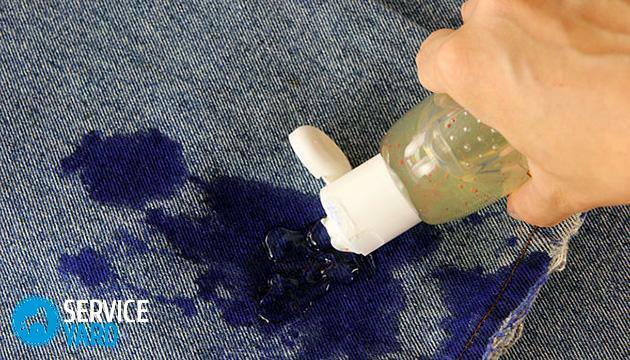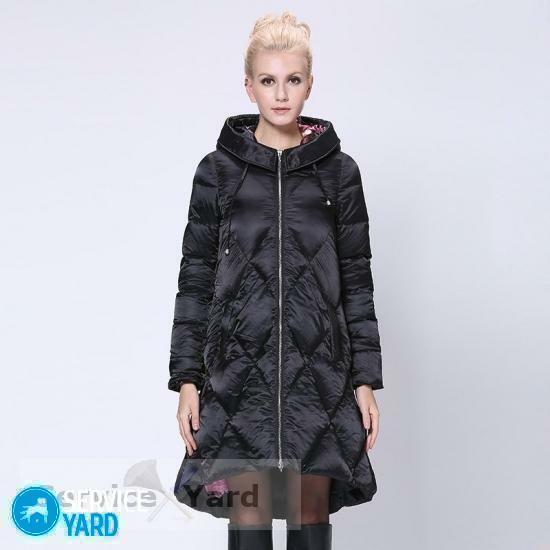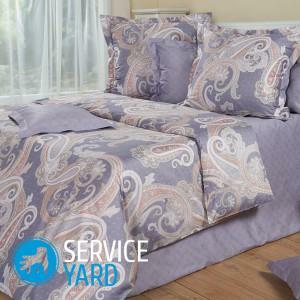
- The best material for bedding
- Calico
- Satin
- Poplin
- Perkal
- So what else can you buy?
For a modern person, quality sleep is a guarantee of health and good mood. That's why you should always think about making it comfortable for you. Bed linen and is responsible for the comfort of our sleep and rest, because it's so nice, after a grueling working day to luxuriate in your bed. But given the abundance and variety of different textures, materials and coloring, many are lost in choosing which bedding is best - satin or poplin, or coarse calico? It is from these materials that all pillowcases, duvet covers and sheets are sewn. Despite the fact that these materials are similar in texture, they still have differences. In order not to get lost in the bowels of the assortment of a particular store and ensure a comfortable rest, you need to know a few points that will help you in future when choosing home textiles. We'll look at them in this article.
to content ↑The best material for bedding
When buying a blanket, pillowcases or pillows, many factors influence our choice:
- natural composition;
- weave yarn;
- quality and color fastness after washing;
- price;
- tactile sensations.
Therefore, in order not to miss, we will disassemble every kind of fabric, in order to avoid problems with the choice of bed linen in the future.
Important! Always pay attention to the density of the fabric: the higher it is, the bed linen will be more durable. Parameters by which it is possible to determine the density of the weave( per 1 cm square):
- low - 20-30;
- below the average - 31-40;
- average - 50-60;
- above the average - 65-80;
- high - 85-120
- very high 130-300.
To date, the absolute popularity in the textile market has the materials calico and satin. Therefore, before deciding which bedding to buy better - from calico or satin, we will disassemble in turn each type of fabric.
to the table of contents ↑Calico
Bedding made from coarse calico today is very popular, because they are quite cheap in relation to other materials.
Important! Biaulia is a fabric that is made from thick yarns of very dense cruciform weaving. The filaments are so thick that the weaving can be seen with the naked eye. The density of coarse calico is 50-140 threads per square meter.
Types of
There are several varieties of coarse calico:
- severe;
- bleached;
- smoothly dyed;
- printed.
Important! For the manufacture of bed linen, use mostly smooth-painted( very cheap) and stuffed. The bleached coarse calico is used for sewing medical clothes and napkins. Harsh is used for upholstery upholstery.
Consider other features of the material to understand which bedding is best - satin or poplin, or coarse calico. 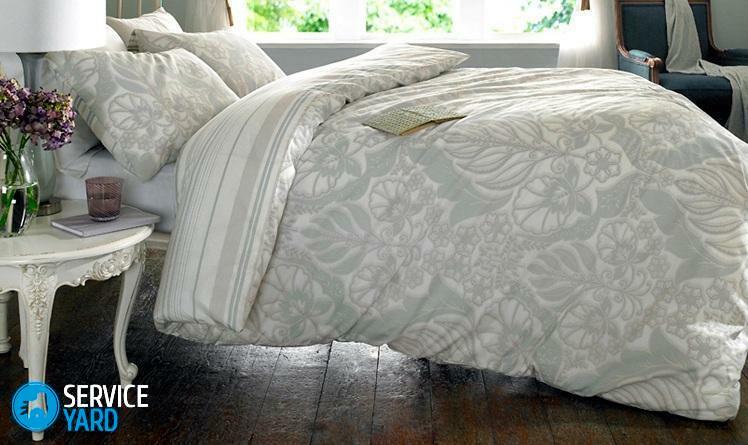
Pros and Cons of
The advantages of this material include:
- Naturalness of the composition. Calico is considered an ecological material, so there are no contraindications to allergic people, it is allowed to sew off the bed sets for children.
Important! Always look at the composition. If the composition indicates that there is an admixture of synthetic fibers, then such a product should not be taken. After a few washings, such material will have pellets.
- Strength and durability. Due to its density, kits made from coarse calico can withstand more than 300-350 washes. They do not sit down and do not stretch.
- Price. Bed linen made from calico is considered a budget option.
- Sets sewn from it, have air permeability.
Important! As for the shortcomings, this is a roughness. This is why it is not recommended for use in the smallest and smallest babies, as well as individuals with sensitive skin.
Features of care
In order for bed linen from calico to serve you long service, you must adhere to several rules:
- You need to wash at a temperature of no higher than 40 degrees and spinning 600 rpm.
- To prevent the drawing from washing out, turn the laundry inside out before each wash.
- When washing, do not combine the coarse calico with other materials, since cotton fabrics thereby become "fluffy".
- Wash with detergent intended for colored fabrics.
- Do not use bleach.
- When drying, try not to get direct sunlight on the clothes.
- Ironing the laundry better from the wrong side.
Important! Always study the information that the manufacturer puts on the tag.
to the contents ↑Satin
In order to know if the bed linen is good from satin, you need to understand what kind of material it is.
Features and properties:
- Satin is a fabric that has an absolutely natural composition.
- This material perfectly absorbs moisture and lets in air, so it is used for sewing different sets of bed linen.
- Satin is a very dense material. The density of its weaving 120 threads per cm.
- Despite its natural composition, unlike calico, it is very soft. People even compare it with silk. But in comparison with silk, satin is much cheaper, which causes popularity among consumers.
- Due to the glossy surface, the bed linen becomes exquisite. Inner, in turn, matte and rough. Due to this, the laundry will not slide and get stuck in a heap.
- It is very important to know when choosing linen from satin that this material is considered "warm".It will be excellent to warm in the cold season, but in the summer it can cause unpleasant sensations.
Important! Over time, after numerous washings, the gloss will disappear, but the quality of the fabric and the color palette will not wash out.
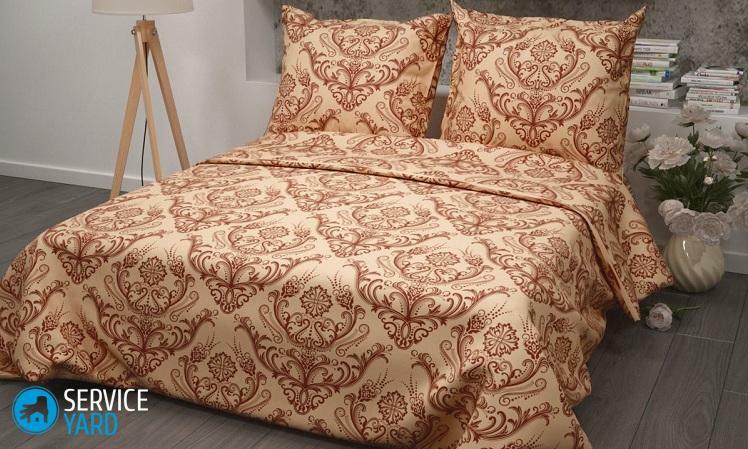
Checking the quality of
Because of its high cost, negligent producers, in the guise of satin, they sell cloth with impurities. Therefore, in order not to lay out a round sum for defective and poor-quality goods, you need to correctly determine which satin is better for bed linen:
- Before buying, you need to study the composition. In this satin is 100% cotton. There should not be any impurities.
- Weaving density. In the standard, the ideal option is weaving 120 per cm square. But it is also permissible to weave 118-180 threads per sq. Cm.
- The quality of satin can also be determined with the help of light. A qualitative material can only be passed through a muffled daylight or electric light. Through satin of poor quality, the outlines of objects will be visible.
- Sometimes manufacturers on the packaging can write about mercerization. This means that the satin gloss will last a very long time.
- Touch the laundry. If the front side is slightly rough, this means that such a satin is short-lived.
Important! On the tags of the kits, there is sometimes a name called "mako-satin".This means that the material is absolutely natural and has no impurities. If you are interested in it, then immediately be ready to pay a round sum, as this is a very expensive product.
Pros and Cons of Satin Bedding
Let's sum up the advantages of this material in general, to understand which bedding is better - satin or poplin, or coarse calico:
- This material does not crumple. He suffices just a small shake in order to get a primordial appearance.
- Glossy surface, which gives extra comfort when in contact with the body.
- Heat. It keeps warmth well, due to which it is suitable for cold season.
- Does not slip on the mattress.
- Not electrified.
- High durability of dyes.
Negative properties of satin:
- Expensive.
- If the satin is too smooth, then a feeling of discomfort arises due to excessive sliding.
- It is very hot in summer.
How to care for your satin lingerie?
- For every wash, the laundry must be turned inside out, fasten all zippers and buttons.
- It is not recommended to use bleaching agents.
- The satin linen is washed at a temperature of no higher than 60 degrees.
- Can not be washed with polyester.
Important! Sateen underwear does not require ironing.
to content ↑Poplin
Sometimes, because of their similarity, consumers confuse poplin with satin. In order to know which bedding is best - from satin or poplin, you need to take into account the difference that still exists:
- Poplin, unlike satin, consists of a natural base, but has different admixtures.
- Also the difference between these two materials is in the weave. Poplin is woven from threads of varying thickness, due to which a certain roughness is possible.
Because of different technologies for processing poplin, there are several types:
- printed;
- smoothly dyed;
- is variegated.
Features:
- Poplin is a fairly strong material, although very thin. Unfortunately, in comparison with other tissues, it very quickly starts to be washed. After 120-200 washing the bed linen will be unpresentable.
- The outer side of the poplin also has a small gloss, due to which it is compared with satin. But unlike his named "brother", poplin retains the warmth of a person, adapts well to both the hot summer and the cold winter.
- Has good air permeability.
Important! Due to various impurities, it is not recommended for allergic people, since it can cause skin reactions in the form of rashes, redness.
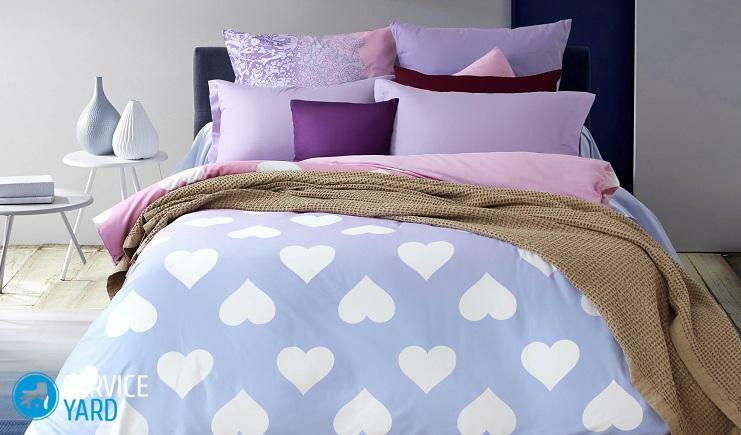
Pros:
- Poplin is a very soft fabric. It is very pleasant to the body.
- Durability.
- Suitable for use all year round.
- Good air permeability.
- Does not cause problems in the care.
Cons of poplin:
- Sometimes raw materials and dyes of poor quality are used.
- Due to poor quality materials used in processing, it can shed.
How to care for poplin?
- Turn the inside out before washing.
- Do not use bleach.
- Do not wash at temperatures above 30 degrees.
Perkal
Let's consider one more variant which also is in demand. Perkal is a very expensive material for making bed linen. In Europe, percale is used for making luxury suites.
Important! This material is absolutely contraindicated to allergy sufferers, since it can cause the strongest allergy. This is due to the fact that the threads are treated with a special adhesive. Perkal occupies the same price positions with silk.
to the contents ↑So, what should I buy?
- Let's start with the price positions. The most expensive in the market are satin and percale, then coarse calico and satin.
- Each of the materials has a natural base, but impurities are also possible. This is worth considering when buying a set of bed linen.
- The huge difference between the types of these materials is the way weave. Therefore, what is right for you is a highly individual decision.
Marcel Ashar once said: "Success comes to those who get up in a good mood."And this - the absolute truth, because if you are uncomfortable asleep, then you will not see a good mood either. In order to raise and improve the quality of your sleep, to have a rested and healthy appearance, it is necessary to take responsibility for the purchase of bed linen. Be vigilant, considerate, and then success is guaranteed to you, as well as a healthy dream!

